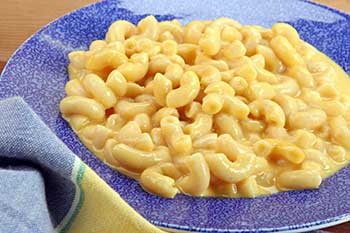Chef Tim Says...
| Salad in a Jar Construction Kit | 08/03/20 |
| Cooking: the real aromatherapy | 05/18/20 |
| Get Started Cooking with Stews | 01/09/20 |
| Paella | 07/16/18 |
| How to make your own shrimp stock | 10/09/17 |
| All "Chef Tim Says..." Columns | |
Dr. Tim Says...
| Not So Magic Rice | 04/09/18 |
| Leaky Gut Syndrome Quackery | 10/02/17 |
| 4 ways to protect your brain with diet | 07/18/17 |
| Chicken skin: to eat, or not to eat | 06/19/17 |
| Change is here | 06/12/17 |
| Medical technology | 03/27/17 |
| All "Dr. Tim Says..." Columns | |
Chef Tim Says....
Making Your Comfort Food Healthier

Your favorite recipe is often the most comforting. We here at Dr. Gourmet are all about making sure that comfort food continues to be a part of your diet. While there are a lot of recipes for you to choose from, we often receive questions about how to make changes in your own beloved dishes to make them healthier.
Here are four simple things you can look at in your recipes that will help:
1. Check the oil or fat
Many recipes simply have too much. Where a recipe calls for 1/4 cup of oil or a half stick of butter, these amounts don’t actually add all that much to the recipe. Use sparing amounts of canola or olive oil to sauté veggies in. Use spray olive oil with a non-stick pan when searing on top of the range.
For dishes that have herbed butters, use Promise or Smart Balance spreads. Look for reduced fat cheeses to use instead of the full fat kind.
2. Add salt carefully
As with the fat, in many recipes salt is often overdone. There are a few places to look for added sodium other than just the table salt you put in your dishes.
Look at every processed ingredient, like meats, sausage and spice blends. Whenever possible, choose lower sodium or salt free products.
When you do add salt to a recipe, a good rule of thumb is that for a main course dish just 1/8th of a teaspoon is about salty enough, flavor-wise, for each serving. If you are making a recipe that will serve 4, that works out to 1/2 tsp. of salt total.
3. Choose ingredients carefully
While this may seem obvious, just looking for a leaner version of an ingredient can make so much difference. For instance, regular sausage can have as much as 14 grams of fat in a 2 ounce serving while the leaner version has only 2.5 grams of fat. That’s a saving of over 100 calories per serving by changing a single ingredient. Look for the leanest meats, lower fat dairy products and the freshest ingredients you can.
This means checking the package for calories, fat, saturated fat, sodium and fiber and comparing with other products to choose the best and healthiest.
4. Go with whole grains
This is one that can have a major impact. We know that using high fiber, whole grain products has an profoundly positive effect on your health.
- If you’re making French Toast, sandwiches or Grilled Cheese, use whole wheat bread. Use whole wheat hamburger buns.
- For Mac & Cheese, Spaghetti and Meatballs, Fettuccine Alfredo and pasta salads, use whole wheat pasta.
- Choose brown rice whenever possible instead of white rice.
With just a few simple changes, you can make your favorite foods healthier!
